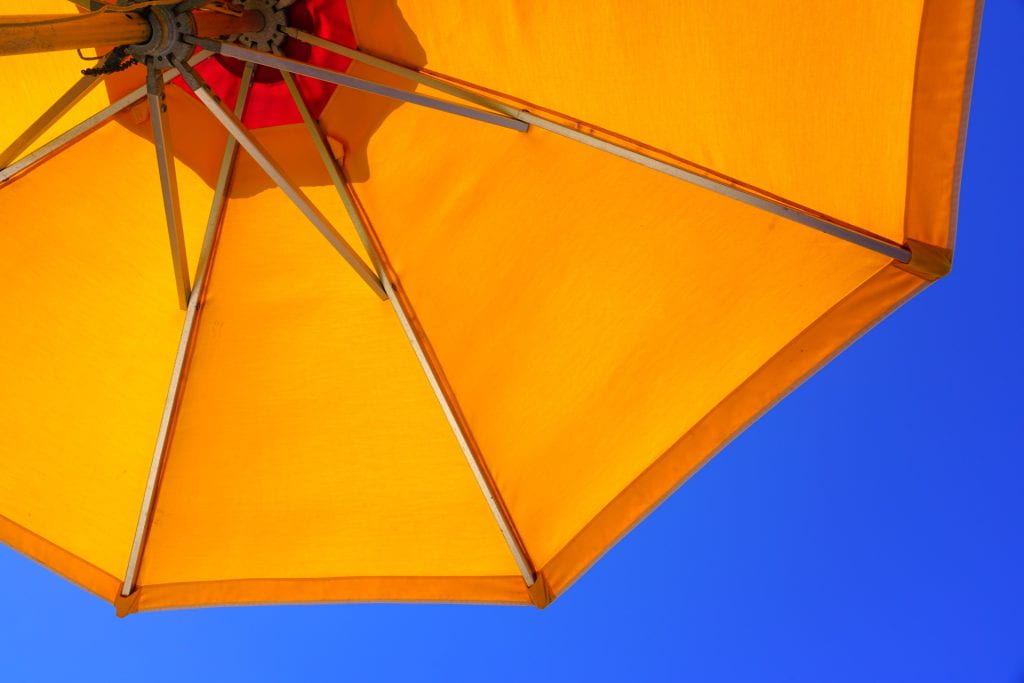The basics are pretty simple: Find shade, use sunscreen and wear sun-safe clothes. But some extra tips can really help us put these into practice.
If all the picnics, barbeques and trips to the park didn’t give it away, summer is now officially in full swing, and for many of us that means getting outside to enjoy the long days and warm weather.
It should also mean remembering to protect our skin from the sun’s damaging ultraviolet (UV) rays. Being sun-safe can help avoid sunburns, slow down skin aging and lower the risk of skin cancer, including serious melanoma. And while that message can seem second nature at this point, the reality is that many of us – maybe most of us – still have steps we could take to improve our sun safety. The basics are pretty simple: Find shade, use sunscreen and wear sun-safe clothes. But some extra tips can really help us put these into practice:
- Be ready for the sun. Most of our trips outside are planned – at least to some extent – so we have time to get ready with sunscreen and the correct clothing. But, it’s summer after all, and that can mean spur of the moment trips outside for a lunchtime walk, a concert at the park or just to get a breath of fresh air. So, it’s good to try to keep a hat, long-sleeve shirt and small tubes or sticks of sunscreen at the ready. They don’t take up too much space and can easily fit in the side pockets of a backpack, in a desk drawer, locker or somewhere in the car.
- Use enough sunscreen (we often don’t). Using sunscreen is great. Using enough sunscreen is even better. Many of us fall short of the recommended amounts to get good protection. When you’re at places like the park or pool, you should typically use one full ounce, which fills the palm of the hand.
- Use a sunscreen with 50 SPF or higher if you’re outside longer. When out for short periods of time, sunscreens with 30 SPF (sun protection factor) can be good choices, but if you’re going to be out for longer, try to use sunscreens with 50 SPF or higher, which provide greater protection.
- Apply. Repeat. Unfortunately, one application of sunscreen doesn’t last all day. To get good protection, it generally needs to be re-applied around every two hours, or sooner if you’ve been in the water or sweating.
- Remember the ears – and other easy-to-miss spots. Don’t rush putting on sunscreen. Take the time to cover as much exposed skin as possible. Pay attention to those places we can sometimes forget, like the tops of the ears, feet and head (if thinning hair).
- Get kids sun-ready first. Before the adults head outside, first get kids sun-ready. Sun exposure in youth is especially important when it comes to the risk of skin cancer later in life. Focusing on kids first can help make sure they’re as protected as possible for fun in the sun.
- Plan your shade. Being under shade is one of the simplest ways to protect ourselves from the sun’s damaging rays. If there aren’t sun shelters or trees available, having your own canopy, tent or large umbrella can be a great back-up plan, and there are many good, affordable options these days.
- Try UPF-rated clothes. Clothes made from fabrics with a UPF rating (ultraviolet protection factor) can be a great choice for summer, helping to block UV rays while also being lightweight and made for outdoor activities. As with sunscreen, the higher the number, the better the sun protection.
- Don’t forget sunglasses. It’s important to protect your eyes along with your skin. Keep a pair of sunglasses as part of your sun-safety gear. Look for those with “100% UV protection” and don’t let the darkness of the lenses or price tag be your marker for UV protection. Check tags and labels to be sure.
- Work toward a sun-safe community. There are steps we can take to help make it easier for the those in our communities to be sun safe, and it doesn’t need to take a lot of time or effort. Send an email to the city council about getting more shade at playgrounds, or start a social media string about adding sunscreen dispensers on bike paths and at ballparks. Even small changes can make an important difference.
Now, let’s get out and enjoy those great summer days – safely.
It’s your health. Take control.
Dr. Graham A. Colditz, associate director of prevention and control at Siteman Cancer Center at Barnes-Jewish Hospital and Washington University School of Medicine in St. Louis, is an internationally recognized leader in cancer prevention and the creator of the free prevention tool, YourDiseaseRisk.com.
